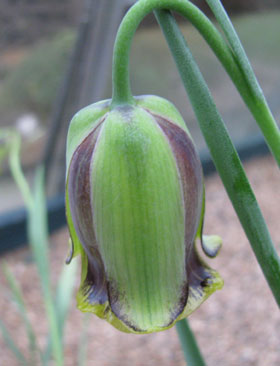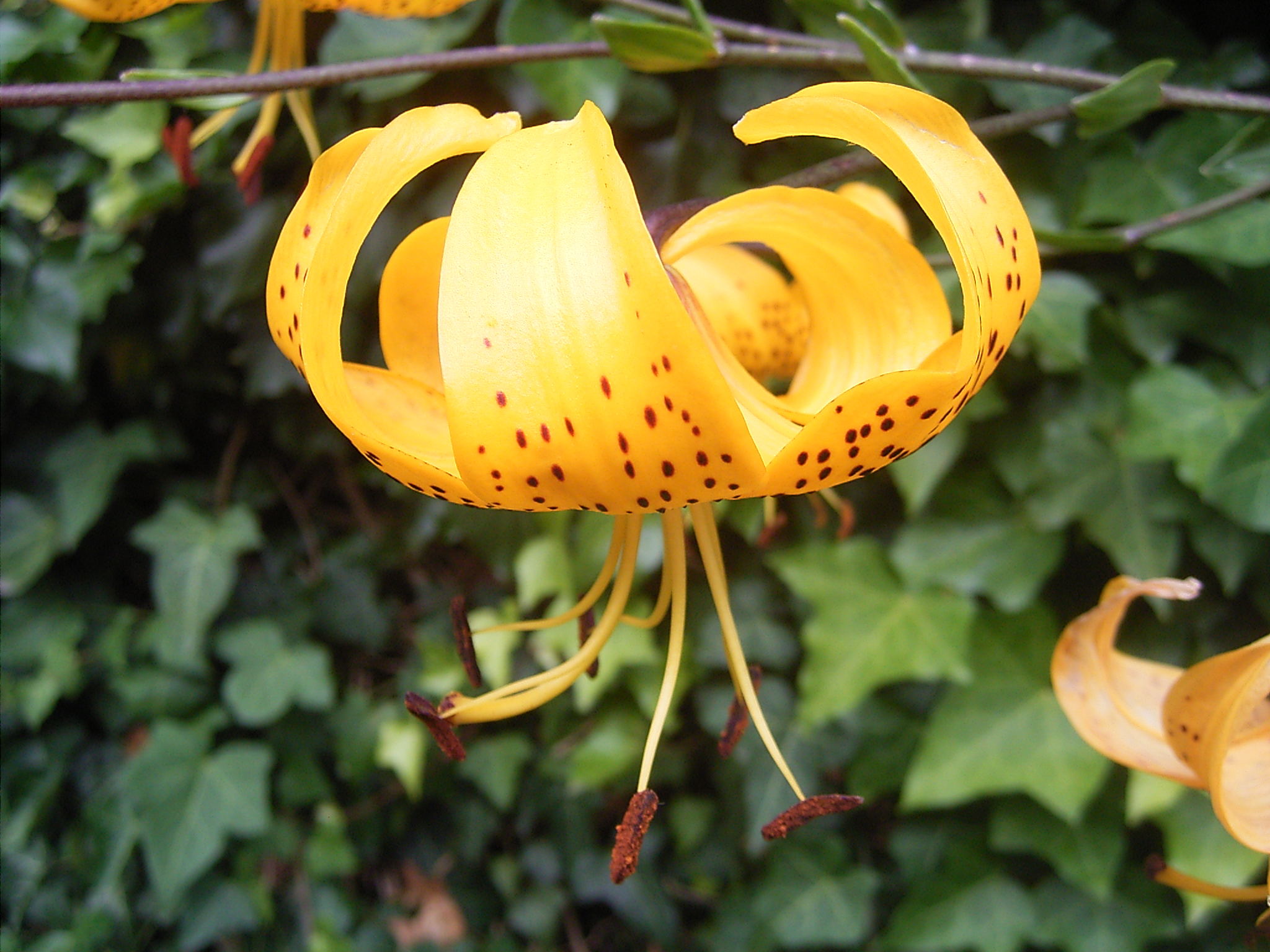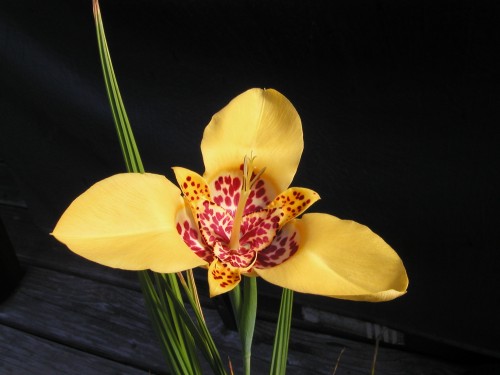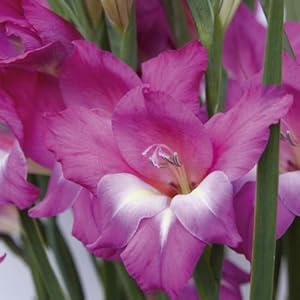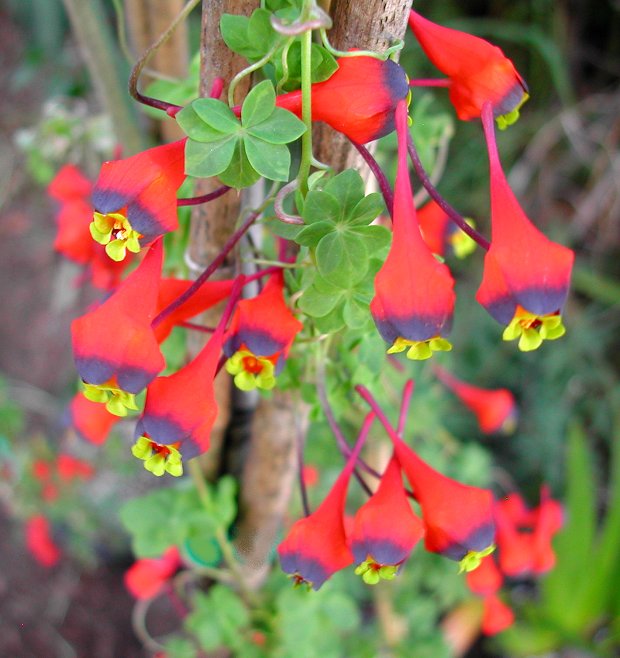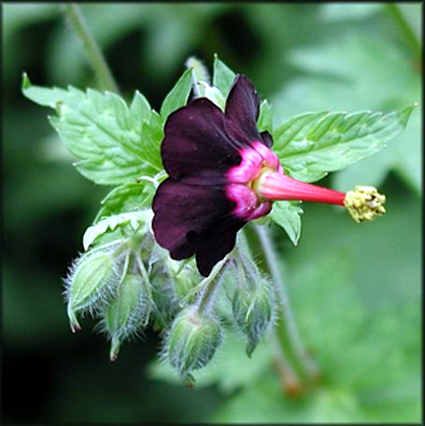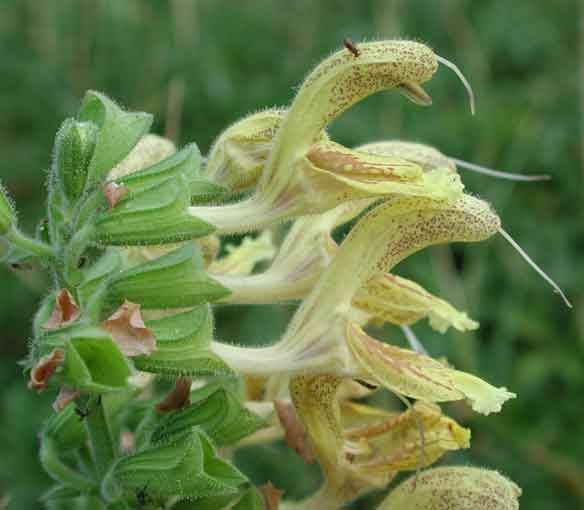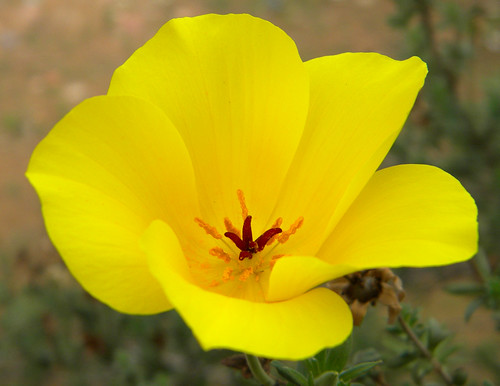Hello and welcome to "I Can't Quite Believe I've Managed This". It's where I take the opportunity to use my own photography of my own plants to show off and prove that I wasn't making it all up. The first offering took me totally by surprise as the bloom is the same colour as the pinewood on the inside of the bulb frame (although it's propped right open now, as all contents, with the possible exception of the Gladioli and Moraea corms/bulbs no longer need protction from the rain, which hasn't fallen for weeks anyway).
First, potting medium: many eschew a humus-based compost, preferring soil-based. I'm saying nothing but the plant you are looking at is quite happy in a mix of good quality potting compost, plenty of perlite, gravel, sand and slow-release fertiliser granules. The pot doesn't need to be too big: the top of the bulb should be just below the surface, which should be covered with gravel to protect the neck of the bulb and emerging shoot from stem rot.
Plant in your dry mixture any time from late summer onwards, when the bulbs are dormant and it's very,very dry in Tajikistan. Keep yours out of the rain too, ideally in an alpine house or bulb frame but I have been known to improvise with upturned fish tanks and even clear plastic storage boxes. (Assuming you live in the UK) you can start waking it up either when it tells you it's ready by poking a single green bud through the gravel or give it a water around the end of January, avoiding the centre of the pot.
This should be enough to kick start growth but don't panic if it doesn't, just wait a bit and try again. Unless you've had really bad luck and something's eaten it (mouse-proofing might help although I've never had a problem with them, just squirrels eating my lilies) or it's rotted, it's just waiting till it feels Caucasian enough. As it grows, so your watering (and feeding about every three weeks with tomato or bulb food) regime grows. Remember, this is a very well drained potting mix and once growing the Iris needs to not only build up the strength to do that amazing yellow thing again next year (this year's flower comes from last year's energy store) but it will also probably want to start building a second bulb. If you're unlucky it will put so much effort into this it won't flower at all but put all its energy into this new bulb but, looking on the bright side, you'll get a double display next year).
Some junos will manage only a single flower such, as I. nicolai, which barely gets off the ground in the wild, sheltering behind the odd stone and struggling to an inch or two. It does a little better in cultivation heightwise but I've still only ever seen one bloom, although one seen, never forgotten. Definitely one for next year now I've got the bare minimum of experience. The fact that it'll cost around £30 for a flowering sized bulb (I'll go to Paul Christian Rare Plants first, he provided so much of what's bursting forth around me that I can't recommend him highly enough and no, he's not my dad or anything (the closest I could get to nepotism is bigging up Glendoick but they don't really need the publicity).
I don't think Iris cycloglossa or svetlanae are going to flower this year. The former has sent up a healthy wee shoot but it looks more like an off-set than something that's going to turn into that unique helter-skelter flower formation that sets it apart from all other Irises. Svetlanae has obviously split, as predicted when I took the photo on the left on New Year's Day - there are now two clear shoots that are 6in long, thin and so floppy I've had to tie them up to a stick for their own good. The floppiness doesn't to be caused by anything pathological but I've treated it with sulphur anyway.
Irises bucharica, magnifica, aucheri (a mighty foot tall) and zenaidae (controversially claimed by one source to be a form of I. graeberiana from the Tien Shan are budding up nicely and I reckon aucheri should manage about half a dozen typically icy blue flowers although as it has such a wide distribution, from northern Iraq, southeastern Turkey, northern Syria, western Iran and Jordan (just about anywhere with a civil war at the moment) there is some variation in the shade of blue although all are scented and robust, relatively easy plants to grow.
Bucharica is incredibly easily grown in the UK and unless you live in a bog it should thrive outdoors in a sunny, well-drained spot. I grow mine in a pot only because a) I don't have a garden and b) I like to keep track of the off-sets andit's a lot easier to tip out a pot every three or four years than it is to get the fork out and posssibly skewer the bulbs or damage the carrot-like roots. It's a handsome yellow and white but my pan of bulbs is a bit behind this year and won't flower for another week or more.
Zenaidae is much rarer (if what I paid for it is anything to go by) but it looks like having multiple blooms too. It is violet blue. Magnifica is a chunky fella that can easily reach two feet if happy. Its white flowers are borne in abundance, or will be soon, and it's another worth trying in the rockery if you can afford to lose it. None of the juno Irises is susceptible to cold, it's water in the leave axils, around the stem and around the bulb that's the killer.
If you don't grow them yet I suggest bucharica in a pot as a starting point. Don't buy those awful packs hanging up in supermarkets or garden centres, what suits a bag of clementines may not be the ideal environment for a dormant (but not dead) flower bulb.
And now, from gold to brown
Who'd have thought a genus made up largely of brown flowers could have such an ardent following? To be fair they're not all brown, there's a lot of green and black in there too, and the odd browny-pink, plenty of yellow but it's an unusual bunch to be sure. There are three main groups, those that hail from Europe, mostly Greece and Bulgaria but we do have our own F. meleagris, which is possibly native or an escapee but certainly loves a moist bit of meadowland. Then there's those from eastern Turkey and all points east through the former Soviet states. The third are North American and, unsurprisingly given the distance, they are surprisingly similar in their variety, if that makes sense. What I mean is there is a huge variety of flower shapes (usually based roughly on a bell), colours and forms.
I'm growing about 20 and showed you stenanthera (pinky brown) and bucharica (white) a few weeks ago and then there are these two flowering side by side: brown and gold; and orangey brown!
F. uva-vulpis is one of the easier species, it should be happy in the garden in a well-drained, sunny spot. They like a lot of water when in growth so the rockery might not be the best spot unless you're prepared for some precision watering. As long as the corms are not sitting in wet soil you should be okay. When planting, it can be extremely difficult to tell which way is up so we tend to plant them on their side, that way you can't fail. It would do no harm to prepare the soil with some well-rotted compost or manure, and then lay each bulb on a little pile of grit or sand. This is all done in autumn and they will start to appear alarmingly early from January but they know what they're doing!
I think the "minuta" refers more to the bulbs, which are like peas, than the plants which are hardly giants but a good 3-4 inches tall which is not small for the genus. I've got three corns in a 3.5in pot and that looks proportionate.
I'm so pressed for space that everything is crammed into a corner on the ground until I spot it making its move, whence it's whipped onto the windowsill meaning you get a great view from the living room.
So I can't fill you in any further on that particular golden girl but lets move to Iraq (not literally, that might be a bit dangerous at the moment) ...
The feeding regime is exactly like that for the bulbous Irises. As long as the plant is photosynthesising it should be fed and watered but with a weaker and weaker food solution as the plant goes back into dormancy.
You can leave some outside in their pots year-round, that's what I'm doing although you must have a well-drained potting mixture as the bulbs abhore sitting in the wet. I lost one (not a bad rate) over the winter, F. montana, and I'm blaming its sitting in excessive wet. It wasn't the cold, you really don't have to give a shit about the cold with Frits, other than to hop to give them a good, hot baking in the summer, such as they would get on a rocky Central Asian hillside. It's cold AND damp that will get them so I suggest a bit of internet research on which ones you really need to cover. The list varies geographically so I'm afraid I can't really tell you.
Propagation is by off-set (I'm getting them already and the corms have only been flowering size for a year) or seed, which is easy if you're in no hurry. I don't know if fresh seed helps because I've never sown any but I did try acmopetala, graeca and whittalli last autumn. A few whittalli came up really quickly and then winter came along and they went into stasis but survived almost exactly as they were until a few weeks ago when the other two pots zipped up at exactly the same time as the first bulb to flower, stenanthera, bloomed. So this points so some benefit in stratification but no conclusive need for it.
Can you see the two life-size greenfly on the left-hand flower? Aphids are a bit of a problem with Frits but only really a danger as the growth tip emerges and develops, at which time you can be easily lightly grasp the shoot and run your fingertips up it, brushing them off or, better, squishing them.
This medium-sized Frit is the snappily named Fritillaria hermonis amana from the south of Turkey (which makes it Asian, just). I love the way all the species have that tessellation in some form or other. Even bucharica, which on first glance looks white or cream, is actually white and cream, thanks to wonder that is nature. I can remember if F. persica has it, though I'm sure it does, as it's only a foot tall at the moment and just developing its flowers. Mind you, those 12 inches took about five days to grow from a little green thimble into the slightly intimidating mass of vegetation that is now threatening to take over the roof.
It has black/brown/purple bells and I used to grow it as a child (I was very precocious) but I forget exactly what its flowers were like other than huge.
This is the biggest of the lot by some way, with the tedious and pointless Crown Imperial, F. imperialis, next with orange or yellow bells but it's not as nice as it sounds. The only place I would recommend it is in an old-style English country garden where it multiplies quickly to form a splash of colour for a week or two and then a mess of decaying foliage for six months, which you could hide with a Dahlia or similar.
There follows a conundrum. The above two shots are definitely what is says on the packet, although the bottom of the petals will flare out a little more but not much. Now look at what was sold to me as F. acmopetala:
Can you see the difference? A catalogue picture of acmopetala looks like this:
but ranges to this:
The two species are definitely close and may have inter-bred in the wild, meaning true species are had to come by as they live in the same areas and occupy the same habitiat. I think when both my species flare at the bottom they will be impossible to tell apart. Who'd be a taxonomist, eh?
Last one (and even more confusing):
I dunno, it's enough to make a tee-totaller's head hurt on a Sunday morning, especially as there is water from my flat (totally dry) apparently pouring into the cafe below. I could do without that on a day where we've already lost an hour to move to GMT+1 for the farmers and schoolkids walking to school in the morning. Now they jusy get run over at night instead.
A few pretty blooms to end on a high:
Well, that's all for now but as you can see things are taking off and when I'm not pricking out I'm spraying a hose around. Down to one Delphinium semibarbatum but it's really picked up. Three nudicaule survived the slugs although another two stems refuse to die, despite having no leaves.
Alstroemerias are germinating, one of my mystery pots is definitely a primula and I know it's not a candelabra. Might be wilsonii. And the mystery turquoise Delphinium is taking well to transplantation, as are several other anonymous things. The blue Lathyrus sativus is germinating like hot cakes and aureus has been pricked out and picked up the baton. I want some Irises soon but I've got a horrible feeling the Asiatic hybrid Lilies are going to flower before too long.
Swings, roundabouts and compost. Have a great week and speak to me! I is on Twitter, yah know what I is sayin bruv?
Safe.
First, potting medium: many eschew a humus-based compost, preferring soil-based. I'm saying nothing but the plant you are looking at is quite happy in a mix of good quality potting compost, plenty of perlite, gravel, sand and slow-release fertiliser granules. The pot doesn't need to be too big: the top of the bulb should be just below the surface, which should be covered with gravel to protect the neck of the bulb and emerging shoot from stem rot.
Plant in your dry mixture any time from late summer onwards, when the bulbs are dormant and it's very,very dry in Tajikistan. Keep yours out of the rain too, ideally in an alpine house or bulb frame but I have been known to improvise with upturned fish tanks and even clear plastic storage boxes. (Assuming you live in the UK) you can start waking it up either when it tells you it's ready by poking a single green bud through the gravel or give it a water around the end of January, avoiding the centre of the pot.
This should be enough to kick start growth but don't panic if it doesn't, just wait a bit and try again. Unless you've had really bad luck and something's eaten it (mouse-proofing might help although I've never had a problem with them, just squirrels eating my lilies) or it's rotted, it's just waiting till it feels Caucasian enough. As it grows, so your watering (and feeding about every three weeks with tomato or bulb food) regime grows. Remember, this is a very well drained potting mix and once growing the Iris needs to not only build up the strength to do that amazing yellow thing again next year (this year's flower comes from last year's energy store) but it will also probably want to start building a second bulb. If you're unlucky it will put so much effort into this it won't flower at all but put all its energy into this new bulb but, looking on the bright side, you'll get a double display next year).
Some junos will manage only a single flower such, as I. nicolai, which barely gets off the ground in the wild, sheltering behind the odd stone and struggling to an inch or two. It does a little better in cultivation heightwise but I've still only ever seen one bloom, although one seen, never forgotten. Definitely one for next year now I've got the bare minimum of experience. The fact that it'll cost around £30 for a flowering sized bulb (I'll go to Paul Christian Rare Plants first, he provided so much of what's bursting forth around me that I can't recommend him highly enough and no, he's not my dad or anything (the closest I could get to nepotism is bigging up Glendoick but they don't really need the publicity).
| All the signs were there on Jan 1 |
Irises bucharica, magnifica, aucheri (a mighty foot tall) and zenaidae (controversially claimed by one source to be a form of I. graeberiana from the Tien Shan are budding up nicely and I reckon aucheri should manage about half a dozen typically icy blue flowers although as it has such a wide distribution, from northern Iraq, southeastern Turkey, northern Syria, western Iran and Jordan (just about anywhere with a civil war at the moment) there is some variation in the shade of blue although all are scented and robust, relatively easy plants to grow.
Bucharica is incredibly easily grown in the UK and unless you live in a bog it should thrive outdoors in a sunny, well-drained spot. I grow mine in a pot only because a) I don't have a garden and b) I like to keep track of the off-sets andit's a lot easier to tip out a pot every three or four years than it is to get the fork out and posssibly skewer the bulbs or damage the carrot-like roots. It's a handsome yellow and white but my pan of bulbs is a bit behind this year and won't flower for another week or more.
Zenaidae is much rarer (if what I paid for it is anything to go by) but it looks like having multiple blooms too. It is violet blue. Magnifica is a chunky fella that can easily reach two feet if happy. Its white flowers are borne in abundance, or will be soon, and it's another worth trying in the rockery if you can afford to lose it. None of the juno Irises is susceptible to cold, it's water in the leave axils, around the stem and around the bulb that's the killer.
If you don't grow them yet I suggest bucharica in a pot as a starting point. Don't buy those awful packs hanging up in supermarkets or garden centres, what suits a bag of clementines may not be the ideal environment for a dormant (but not dead) flower bulb.
And now, from gold to brown
| Fritillaria uva-vupis |
I'm growing about 20 and showed you stenanthera (pinky brown) and bucharica (white) a few weeks ago and then there are these two flowering side by side: brown and gold; and orangey brown!
F. uva-vulpis is one of the easier species, it should be happy in the garden in a well-drained, sunny spot. They like a lot of water when in growth so the rockery might not be the best spot unless you're prepared for some precision watering. As long as the corms are not sitting in wet soil you should be okay. When planting, it can be extremely difficult to tell which way is up so we tend to plant them on their side, that way you can't fail. It would do no harm to prepare the soil with some well-rotted compost or manure, and then lay each bulb on a little pile of grit or sand. This is all done in autumn and they will start to appear alarmingly early from January but they know what they're doing!
| Fritillaria minuta |
I'm so pressed for space that everything is crammed into a corner on the ground until I spot it making its move, whence it's whipped onto the windowsill meaning you get a great view from the living room.
| And that's less than half of it! The majority of these are lilies in various stages of development, from germinating (regale) to 3ft tall ("Tiger Woods") |
So I can't fill you in any further on that particular golden girl but lets move to Iraq (not literally, that might be a bit dangerous at the moment) ...
The feeding regime is exactly like that for the bulbous Irises. As long as the plant is photosynthesising it should be fed and watered but with a weaker and weaker food solution as the plant goes back into dormancy.
You can leave some outside in their pots year-round, that's what I'm doing although you must have a well-drained potting mixture as the bulbs abhore sitting in the wet. I lost one (not a bad rate) over the winter, F. montana, and I'm blaming its sitting in excessive wet. It wasn't the cold, you really don't have to give a shit about the cold with Frits, other than to hop to give them a good, hot baking in the summer, such as they would get on a rocky Central Asian hillside. It's cold AND damp that will get them so I suggest a bit of internet research on which ones you really need to cover. The list varies geographically so I'm afraid I can't really tell you.
Propagation is by off-set (I'm getting them already and the corms have only been flowering size for a year) or seed, which is easy if you're in no hurry. I don't know if fresh seed helps because I've never sown any but I did try acmopetala, graeca and whittalli last autumn. A few whittalli came up really quickly and then winter came along and they went into stasis but survived almost exactly as they were until a few weeks ago when the other two pots zipped up at exactly the same time as the first bulb to flower, stenanthera, bloomed. So this points so some benefit in stratification but no conclusive need for it.
| These must be graeca. I'm not showing you these for artistic reasons, it's more of a proof thing |
Can you see the two life-size greenfly on the left-hand flower? Aphids are a bit of a problem with Frits but only really a danger as the growth tip emerges and develops, at which time you can be easily lightly grasp the shoot and run your fingertips up it, brushing them off or, better, squishing them.
This medium-sized Frit is the snappily named Fritillaria hermonis amana from the south of Turkey (which makes it Asian, just). I love the way all the species have that tessellation in some form or other. Even bucharica, which on first glance looks white or cream, is actually white and cream, thanks to wonder that is nature. I can remember if F. persica has it, though I'm sure it does, as it's only a foot tall at the moment and just developing its flowers. Mind you, those 12 inches took about five days to grow from a little green thimble into the slightly intimidating mass of vegetation that is now threatening to take over the roof.
It has black/brown/purple bells and I used to grow it as a child (I was very precocious) but I forget exactly what its flowers were like other than huge.
 |
| It's coming to get you! Fritillaria persica |
.jpg) |
| The yellow form works well here but they have to be planted en masse to get any effect and that's a lot of spent foliage to hide for the sake of a few flowers. But maybe I'm being a snob. |
 |
| This is F. elwesii from Turkey (surprise!), Cyprus and Lebanon |
There follows a conundrum. The above two shots are definitely what is says on the packet, although the bottom of the petals will flare out a little more but not much. Now look at what was sold to me as F. acmopetala:
Can you see the difference? A catalogue picture of acmopetala looks like this:
but ranges to this:
The two species are definitely close and may have inter-bred in the wild, meaning true species are had to come by as they live in the same areas and occupy the same habitiat. I think when both my species flare at the bottom they will be impossible to tell apart. Who'd be a taxonomist, eh?
Last one (and even more confusing):
I dunno, it's enough to make a tee-totaller's head hurt on a Sunday morning, especially as there is water from my flat (totally dry) apparently pouring into the cafe below. I could do without that on a day where we've already lost an hour to move to GMT+1 for the farmers and schoolkids walking to school in the morning. Now they jusy get run over at night instead.
A few pretty blooms to end on a high:
| A selection of Corydalis flexuosa from China, I'll name it tomorrow if I remember although it's actually the foliage that's doing it for me |
| Cute one this: a yellow form of Pulsatilla caucasica |
| And who can resist a macro shot of the neighbours? |
Alstroemerias are germinating, one of my mystery pots is definitely a primula and I know it's not a candelabra. Might be wilsonii. And the mystery turquoise Delphinium is taking well to transplantation, as are several other anonymous things. The blue Lathyrus sativus is germinating like hot cakes and aureus has been pricked out and picked up the baton. I want some Irises soon but I've got a horrible feeling the Asiatic hybrid Lilies are going to flower before too long.
Swings, roundabouts and compost. Have a great week and speak to me! I is on Twitter, yah know what I is sayin bruv?
Safe.




